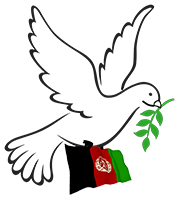The U.S. and Philippine governments have reached a deal to create a new pathway to the United States for Afghan allies who assisted the American war effort, relying on temporarily relocating some of them to Southeast Asia as they await approval for U.S. visas and resettlement, U.S. and Philippine officials said.
The agreement was announced Monday evening, days after the third anniversary of the collapse of the U.S.-backed government in Kabul on Aug. 15, 2021, following President Joe Biden’s order that April to fully withdraw U.S. troops. The ensuing crisis remains a low point of the Biden administration and a persistent electoral cudgel for Republicans.
It was not immediately clear where the Afghans initially approved for transport to the Philippines are now. Tens of thousands of Afghans who are potentially eligible for U.S. visas are spread across the globe, often settling temporarily wherever they can get approval.
In the three years since the Taliban regained control of Afghanistan, the new government has reimposed strict religious controls, curtailing almost all rights for women and girls, while hunting and killing those who helped Americans. Human rights workers have warned that such revenge killings are a persistent problem.
The new plan will be part of Operation Enduring Welcome, the Biden administration’s effort to resettle Afghan allies. It calls for the Philippine government to process about 300 Afghans for resettlement as they await approval of special immigrant visas and resettlement in the United States, U.S. officials briefed on the matter said, speaking on the condition of anonymity because of the sensitivity of the issue.
U.S. officials anticipate that the program could be extended and possibly expanded after the initial few hundred Afghans move through the Philippines, effectively turning the island nation into another temporary “way station” for Afghans as they await resettlement in the United States.
“We’re going to continue to have ongoing discussions with the Philippines, and we’re really hoping that we can show we are good partners in this project,” a senior State Department official said.
The temporary nature of the arrangement is a key detail for the government in Manila, U.S. officials said, with the expectation that Afghans would remain for no more than a few months. Those moving through the Philippines have undergone vetting and received initial approval from U.S. officials. The U.S. government will provide the Afghans involved with food, housing, security, medical services and transportation at a facility outside Manila. In recent days, the senior State Department official said, land has been cleared for a soccer field for the Afghans — and an eight-foot python that was discovered was quickly relocated.
The Biden administration has resettled more than 160,000 Afghans in the United States since 2021, a figure that includes both those who directly supported the U.S. government and their spouses and children, the senior State Department official said. They made it to the United States through several different pathways, including Qatar and Albania, officials said.
The expanded effort comes three years after a U.S.-led evacuation mission in Kabul airlifted 124,000 people to safety from a single runway in 17 days, but it was marked by scenes of desperation and tragedy. Tens of thousands of people eligible for relocation were left behind. An Islamic State suicide bombing at the outskirts of the Kabul airport killed 13 U.S. troops and more than 170 Afghans, and an errant U.S. drone strike a few days later killed seven children and three adult civilians.
U.S. officials said that Biden, Vice President Kamala Harris, Secretary of State Antony Blinken and White House national security adviser Jake Sullivan were among the senior U.S. leaders who helped close the deal with Manila. Biden raised the issue on several occasions, most recently during a meeting in the Oval Office on April 11, a senior administration official said.
Harris, now the Democratic nominee for president, suggested the idea to Philippine President Ferdinand Marcos Jr. on a visit to Manila in November 2022, a few months after he took office. She raised the proposal with him again in May 2023 when he visited Washington and in a November 2023 meeting in San Francisco, the senior administration official said.
Shawn VanDiver, a Navy veteran who leads #AfghanEvac, a coalition of organizations assisting the resettlement of Afghans, said Harris’s engagement was key.
“My understanding is that this thing was sort of stalled, and she got it reinvigorated,” VanDiver said. “I think that it’s really notable that three years into this, we’re still doing this.”
The Philippine ambassador to the United States, Jose Manuel Romualdez, called the agreement “very significant” and suggested it could be extended “if it’s something that we think is successful.” It grows out of a long humanitarian tradition dating to World War II, he said.
It was then, he said, between the late 1930s and 1941, that the commonwealth’s first president, Manuel Quezon, welcomed more than 1,200 Jewish refugees, most from Europe, to the Philippines. Not even the United States then was accepting Jews fleeing Nazi Germany, Romualdez noted.
During the Vietnam War, Marcos’s father, then-President Ferdinand Marcos Sr., opened a center in northern Luzon to process 30,000 Vietnamese people fleeing their country, Romualdez said.
“We’re doing what we can to contribute in our small way into helping people who are displaced,” he said. “I think the majority of people [in the Philippines] know that this is a good thing to do.”
The deal comes amid a backdrop of strengthened diplomatic and military ties between Washington and Manila. Blinken and Defense Secretary Lloyd Austin recently announced plans to deepen defense cooperation and contribute $500 million to modernize the Philippine armed forces.
The nations have a mutual-defense treaty and have grown closer since 2022, when Marcos Jr. took office, succeeding a populist, and drove Manila’s foreign policy sharply toward Washington. He has visited the United States four times, most recently in April.
“The fact that we’re able to do this at this point really reflects where we are in the U.S. bilateral relationship with the Philippines and how strong and good the partnership is right now,” a second senior State Department official said.
This was a “big ask” of Manila, the second official said, given domestic fears that what was framed as a temporary program could become permanent. The Philippines has for decades battled Islamist insurgencies, especially in its south.
U.S. officials assured their counterparts in Manila that the processing would be done swiftly and securely. The Afghans have provided “faithful, invaluable service” to the U.S. government in Afghanistan, officials said. They have gone through pre-travel security checks and medical screening at consulates and embassies around the world, the officials said.
“This does show how deep the trust and partnership is at the moment, extending beyond just the military components of the alliance to a willingness to cooperate politically, economically and diplomatically,” said Gregory Poling, director of the Asia Maritime Transparency Initiative at the D.C.-based Center for Strategic and International Studies.
In the last year alone, officials noted, the two allies have strengthened people-to-people ties; a U.S. presidential trade mission resulted in $1 billion in investments in the Philippines; and Washington helped broker a trilateral summit with Japan and the Philippines to foster economic growth, including by launching an economic corridor on Luzon, the largest island in the Philippines.
But Manila is also mindful of China’s rising challenge, both economically and militarily. Numerous strains between the Philippines and China have emerged in recent years, including a confrontation in June in which Chinese coast guard personnel rammed their ships into Philippine vessels and then boarded them. On Monday, Chinese and Philippine vessels collided again, this time near Sabina Shoal.
Rebecca Tan contributed to this report.
 Afghanistan Peace Campaign
Afghanistan Peace Campaign


